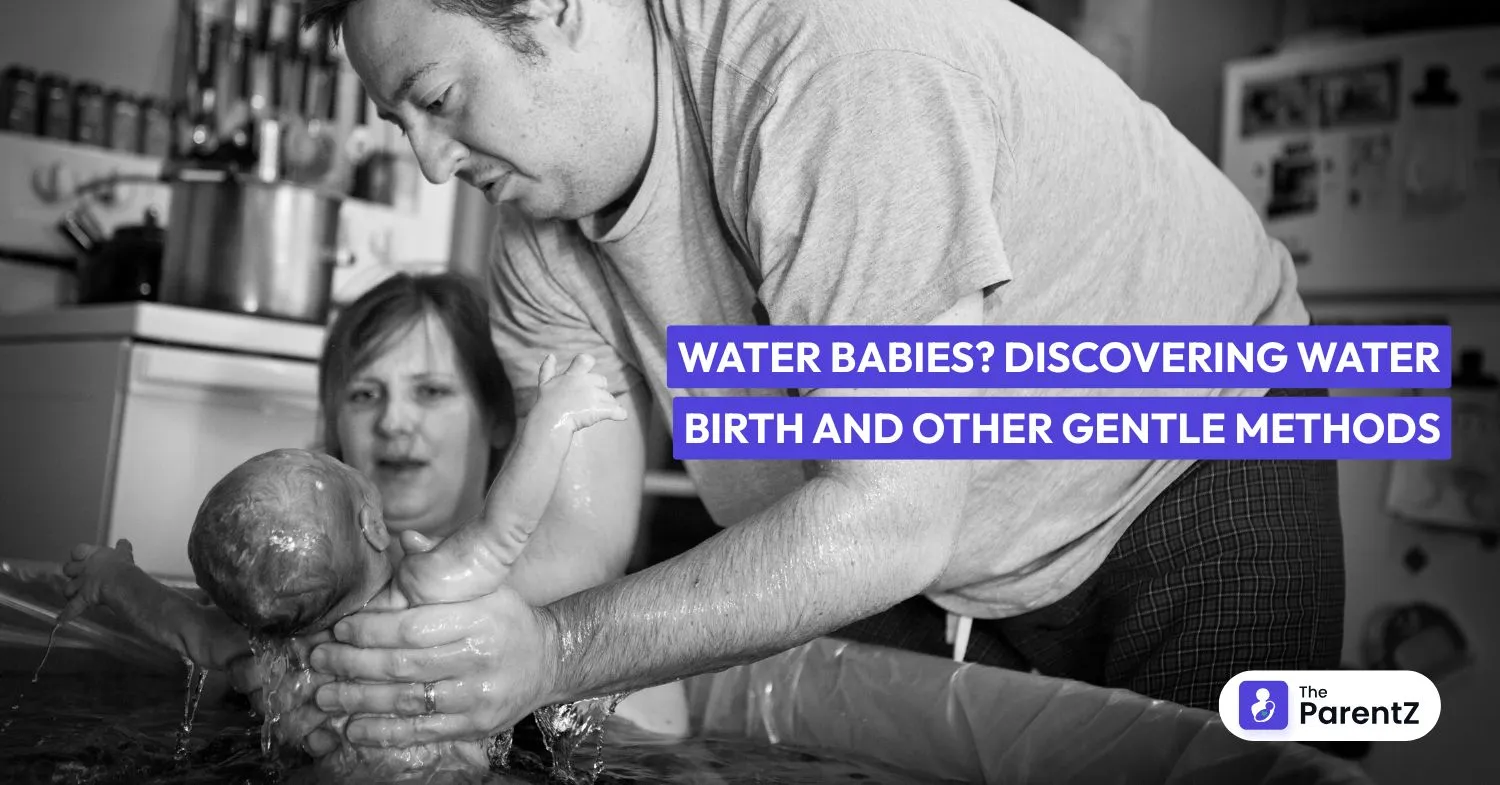The image of a serene mother laboring in a warm birthing pool, candlelight flickering nearby, is a far cry from the bright lights and busy sounds of a hospital delivery room. For some parents, this gentler vision of birth isn’t just a fantasy, it’s a real, evidence-supported alternative.
Water birth and other gentle birthing methods are increasingly chosen by people seeking a more natural, less medicalized experience. They don’t promise a painless labor, but they do aim to reduce fear, ease pain, and create a calm environment where the birthing person feels safe, respected, and supported.
Whether you’re hoping for a water birth, using movement and gravity to labor naturally, or simply want to explore non-invasive comfort options, this article walks you through the world of gentle birth practices, what they are, how they work, and who they’re right for.
What Is Water Birth?
A water birth involves laboring and sometimes delivering in a tub or pool filled with warm water. This can happen at home, in a birthing center, or in a hospital that supports the practice.
There are two main types:
- Laboring in water: You use the tub during contractions but exit before pushing.
- Delivering in water: You stay in the tub for the entire birth, and your baby is born directly into the water.
The theory behind water birth is that warm water provides buoyancy, relaxation, and pain relief, helping the laboring person feel more comfortable and in control. For the baby, water birth is thought to offer a gentle transition from the womb’s amniotic fluid to the outside world.
The Science and Benefits of Water Birth
Studies on water birth—especially laboring in water—show clear benefits for many people, though research is still evolving on delivering in water.
1. Pain Relief Without Medication
Warm water can relax muscles and reduce the perception of pain. Many people find contractions easier to manage in water, delaying or avoiding the need for epidural anesthesia.
2. Lower Stress and Anxiety
Water helps reduce adrenaline and increase endorphins. When fear subsides, labor often progresses more smoothly and with fewer complications.
3. Greater Freedom of Movement
Buoyancy supports body weight, making it easier to move, change positions, and stay upright—key elements in physiological labor.
4. Fewer Interventions
Several studies have linked water immersion during labor with:
- Fewer episiotomies
- Reduced need for Pitocin (oxytocin)
- Shorter active labor
- Less use of forceps or vacuum delivery
5. A Calmer Birth for Baby
Proponents of water birth suggest that babies born into water may experience less stress from the bright lights, cold air, and noise of a standard delivery room. These babies often emerge more peacefully, though all newborns, regardless of delivery method, need the same immediate health checks and support.
Is Water Birth Safe?
Laboring in water is widely considered safe for most low-risk pregnancies and is supported by organizations like the American College of Nurse-Midwives (ACNM). However, delivering in water is more controversial.
Here’s what current guidelines say:
- The ACNM and Royal College of Obstetricians and Gynaecologists (RCOG) support water birth under appropriate clinical supervision.
- The American College of Obstetricians and Gynecologists (ACOG) considers water labor safe but advises caution when delivering in water, due to rare but potential risks like water aspiration or infection.
Potential Risks:
- Infection: If the water is not properly maintained or if there’s meconium in the fluid.
- Umbilical cord issues: Rare cases of the cord snapping during water delivery have been reported.
- Baby’s breathing reflex: Healthy babies typically don’t inhale water because the breathing reflex begins when they hit air, but this requires proper monitoring to avoid complications.
Who Should Avoid Water Birth?
Water birth may not be recommended if:
- You have a high-risk pregnancy (e.g., preeclampsia, multiples, breech baby).
- You’re preterm (<37 weeks).
- There’s excessive bleeding or meconium-stained amniotic fluid.
- Baby needs continuous monitoring or is in distress.
Other Gentle Birthing Methods
Water birth is just one option among many gentle birthing approaches. If a tub isn’t available or you want a more holistic plan, here are other supportive methods to consider:
1. Upright and Mobile Labor
Staying upright (standing, kneeling, squatting) uses gravity to help the baby descend. Movement also relieves pain and encourages efficient contractions.
- Benefits: Shorter labor, fewer interventions.
- Tools: Birthing ball, squat bar, rebozo, walking.
2. Hypnobirthing
A practice that uses guided meditation, breathing, and affirmations to reduce fear and pain perception.
- Emphasizes the “mind-body” connection.
- Studies show reduced anxiety, lower rates of epidural use, and high satisfaction with birth experience.
3. Gentle Cesarean
For those needing surgical birth, a gentle or “family-centered” cesarean includes:
- Clear drapes or skin-to-skin immediately after birth.
- Lower lighting and music in the OR.
- Delayed cord clamping and minimal separation from baby.
This honors the birth experience even in medical contexts.
4. Delayed Cord Clamping
Waiting 1–3 minutes before clamping the umbilical cord allows the baby to receive more blood from the placenta, which is rich in iron and stem cells.
- Supported by WHO and ACOG.
- Reduces risk of anemia and supports newborn immunity.
5. Minimal Intervention Birth
Choosing to avoid unnecessary procedures unless truly needed, such as routine episiotomy, continuous fetal monitoring, or induction for non-medical reasons.
This requires a supportive care team and informed decision-making.
Where Can Gentle Birth Happen?
- Birth Centers: Often offer tubs, midwifery care, and a home-like setting.
- Hospitals: Some hospitals now provide tubs or allow portable birthing pools for laboring.
- Home Birth: With a licensed midwife, home birth allows complete control over setting, lighting, and movement, but should only be considered for low-risk pregnancies.
Always check whether your location allows water birth and ensure you’re supported by a provider trained in safe water delivery.
Questions to Ask Your Provider
If you’re considering water birth or other gentle methods, open communication with your provider is essential. Ask:
- Do you support laboring or delivering in water?
- What are your policies around mobility during labor?
- How do you support natural or low-intervention birth?
- Can I include hypnobirthing or other methods in my plan?
- What happens if my birth plan needs to change?
Conclusion: Creating Calm in the Journey of Birth
Every birth is different, but the desire for a calm, safe, and respectful experience is universal. Water birth and other gentle methods offer a way to honor the intensity of labor while protecting your comfort, autonomy, and peace of mind.
Whether you immerse yourself in warm water or focus on mindful breathing, gentle birthing isn’t about rejecting medical care, it’s about bringing intention and softness into one of life’s most powerful transitions.
The key is not just the method, but how you’re supported, how much you understand your options, and how much you’re heard and respected throughout the process.








Be the first one to comment on this story.